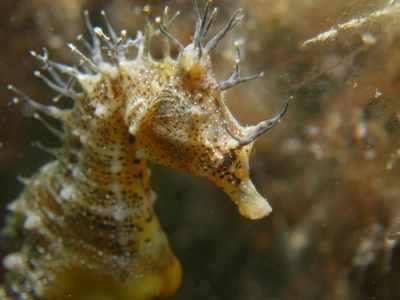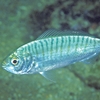General Description
Body compressed, encased in bony rings; tail long, prehensile; trunk moderately deep; snout short; top of head with a distinct coronet, with up to 5 fleshy filaments. Well-camouflaged, brown to yellowish, usually with tiny dark-edged pale blue spots and narrow pale bands on tail. To 8 cm.
Biology
Especially common in Port Phillip Bay (Victoria) where individuals often congregate in patches of Sargassum seaweed.
Habitat
Shallow seagrass beds or amongst macroalgae, in depths of 0-15 m.
Reefs
Seagrass meadows
Distribution guide
Southern Australia.
Species Group
Fishes › Seahorses, pipefish and allies
Depth
Water Column
Max Size
8 cm
Commercial Species
No
Global Dispersal
Native to Australia
Identify
Conservation Status
- DSE Advisory List : Not listed
- EPBC Act 1999 : Not listed
- IUCN Red List : Data Deficient
- Fisheries Act 1995 : Protected Aquatic Biota






